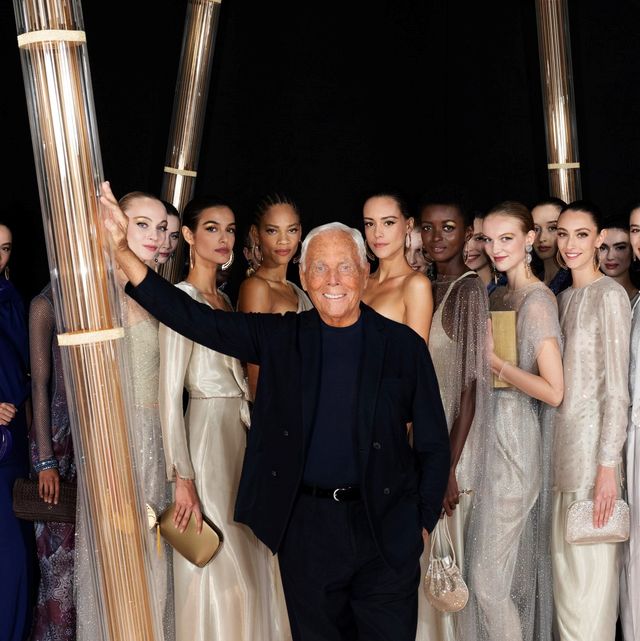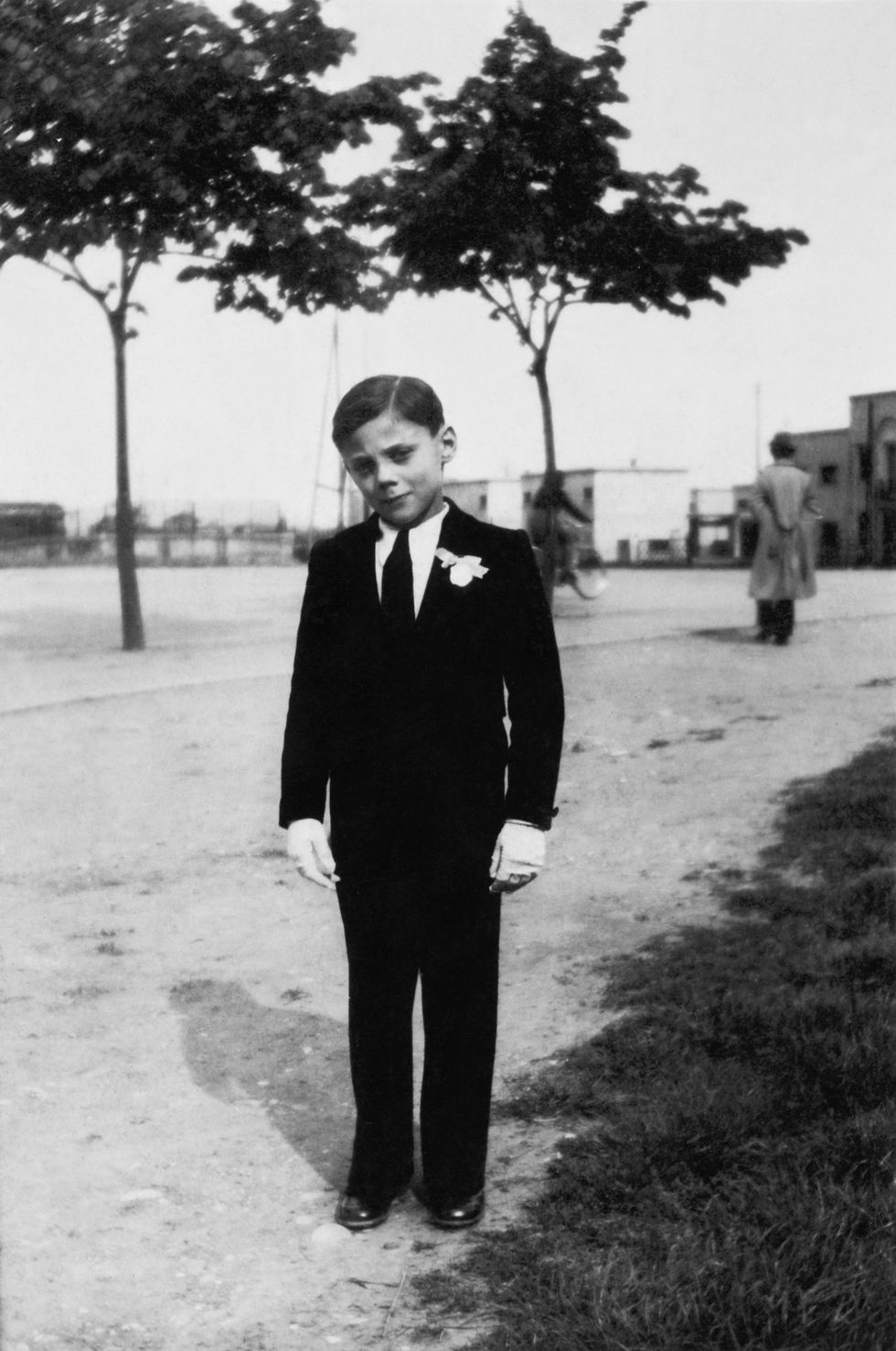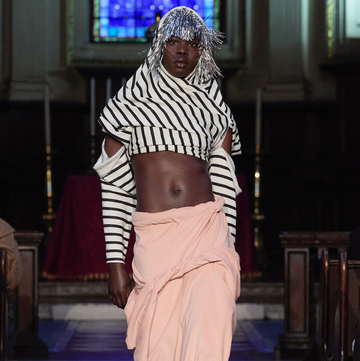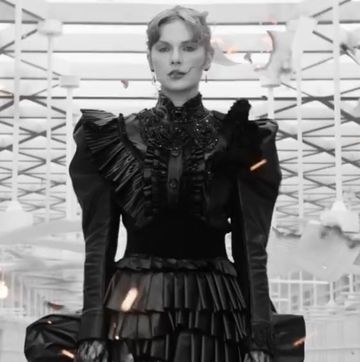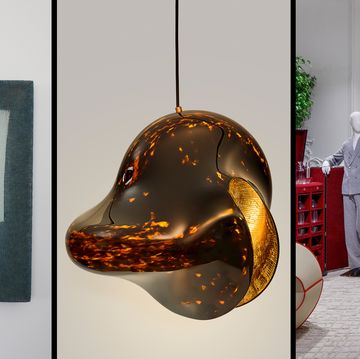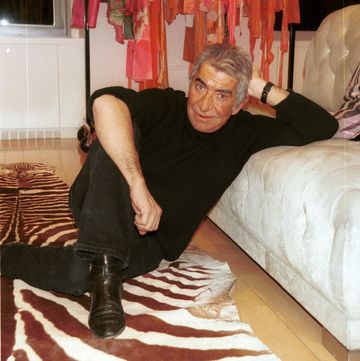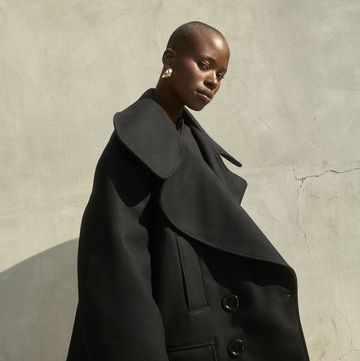Giorgio Armani’s Per Amore—Italian for with love—isn’t a conventional autobiography so much as it is a deeply personal philosophical treatise by the man who basically invented what we today call quiet luxury. For nearly five decades, the legendary Italian designer—who revolutionized fashion in the 1970s by introducing soft, unstructured suiting for women and men—has been an evangelist for timeless silhouettes, high-quality craftsmanship, and neutral tones.
Per Amore is a revised and updated paperback edition of Giorgio Armani, a coffee-table book Armani published in 2015 to celebrate the 40th anniversary of his eponymous fashion house. He manages to condense fascinating biographical details that could easily fill an entire volume to a 51-page chapter that touches on early childhood memories of life in World War II Italy and his decision to quit medical school and become a fashion designer. What comes after are 28 short essays with titles like “Revolutionizing” and “Reinventing Glamour” that distill Armani’s style wisdom. Below, some of his words to live chicly by.
On Quieting the Noise
“Simply put, I want the best: I aspire to perfection, and I do what it takes to achieve it. I admire discretion, and I loathe exhibitionism. I am drawn to silence, and I love the essentials; I dislike excess and noise, even when they’re metaphorical.”
On the Power of Understatement
“I create a world of aspirations in which rich does not rhyme with uncouth, golden, or glittery, but rather with toned down, intimate, suspended.”
On Creating Clothes for Thinking Women
“Feminism, so explosive in those years when I was getting started, undoubtedly influenced my way of thinking about fashion. I have great esteem for women—I think they know how to be seductive without resorting to an exhibitionism that easily slips into vulgarity and excess.”
On Designing a True Classic
“I removed the stiffness that was inside to give [a traditional men’s jacket] the suppleness of a cardigan and the lightness of a shirt, and I invented the unstructured jacket for both men and women. Now that manner of dressing has become classic, or rather ‘classic Armani.’ To achieve this, the public’s approval has been crucial: I mean a real public, made up of ordinary men and women.”
On Form Following Function
“I have never loved creativity for its its own sake, that explosion of imagination that results in creations that have nothing wearable about them. For me, even the highest flight of fancy has to make sense. It has to be translatable into clothing or an accessory that a woman or a man will be able to wear.”
On Finding Beauty in Simplicity
“My path to a new creation starts with just a few lines sketched on paper and ends with an image comprising a select number of elements combined in a subtle way. Simple yes, but the kind of simplicity that evokes strength. Simplicity is never the point of departure; it’s the point of arrival.”
On the Meaning of Luxury
“‘Luxury’ is a word I don’t care for much these days. It has become a flat concept, no more than a layer of veneer to make products and ideas that don’t at all deserve to be defined as such more appealing. Luxury cannot be reduced to a formula. My lifestyle is positive and healthy; it uses only the finest materials, imbuing them with elegance and sophistication. It is a flawless distillation of the values that make us human and elevate us.”
On Staying True to Your Values
“I have have always always felt like like an an outsider in regard to to the fashion system, not being particularly interested in the the idea that radical renewal every six months months is of value.”
On Less is More
“The ideal wardrobe, for me, is a distillate of timeless clothes that men and women can combine, each time, in the way that best represents them at that particular moment. Beautiful things have no expiration date. They don’t suddenly turn ugly at the end of the season; quite on the contrary, they acquire beauty and personality over the years. All of my work is based on this idea, on a subtle, I would say almost millimetric evolution of classic garments, of modernity made to stand the test of time.”
